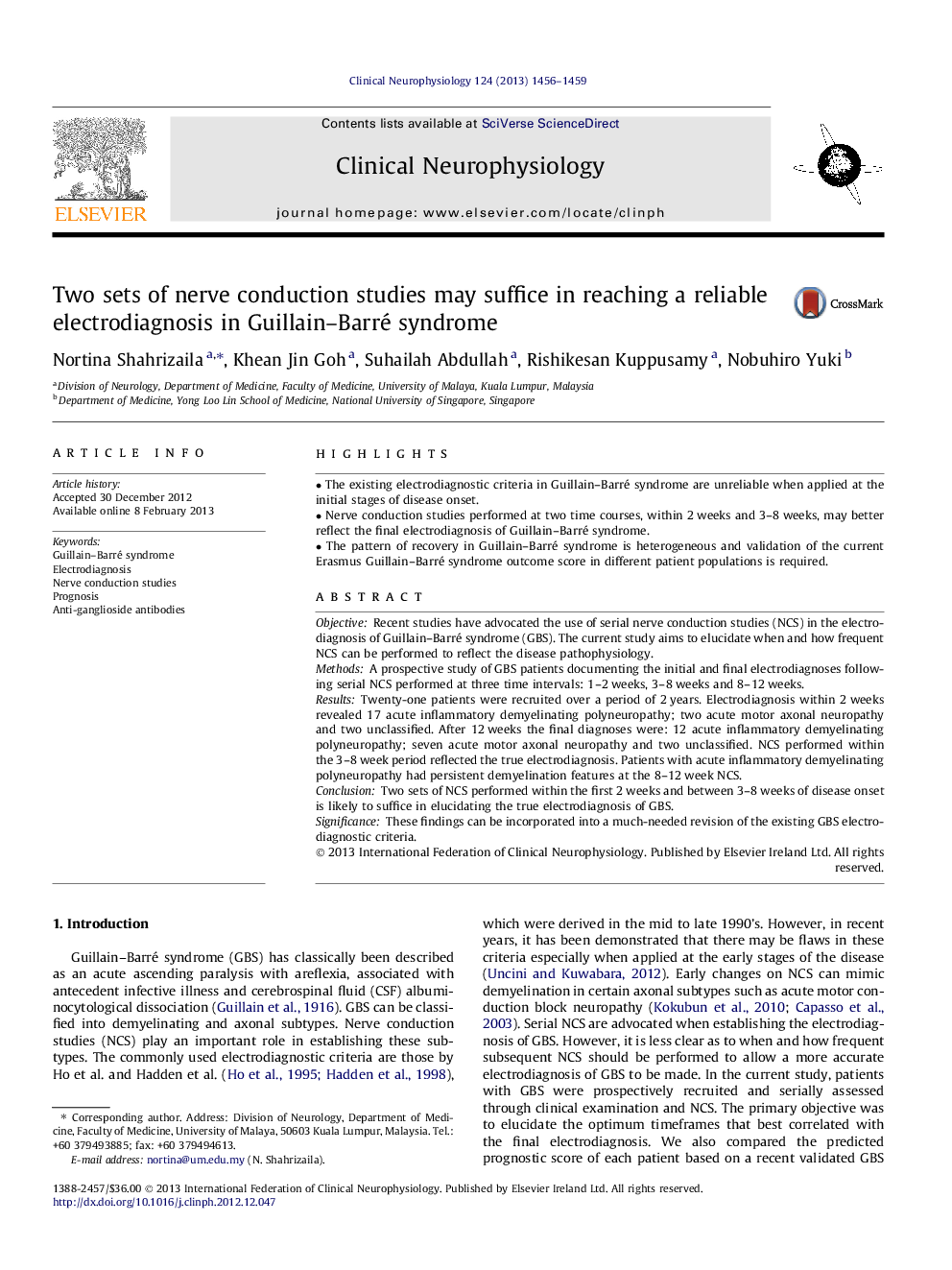| Article ID | Journal | Published Year | Pages | File Type |
|---|---|---|---|---|
| 3043536 | Clinical Neurophysiology | 2013 | 4 Pages |
ObjectiveRecent studies have advocated the use of serial nerve conduction studies (NCS) in the electrodiagnosis of Guillain–Barré syndrome (GBS). The current study aims to elucidate when and how frequent NCS can be performed to reflect the disease pathophysiology.MethodsA prospective study of GBS patients documenting the initial and final electrodiagnoses following serial NCS performed at three time intervals: 1–2 weeks, 3–8 weeks and 8–12 weeks.ResultsTwenty-one patients were recruited over a period of 2 years. Electrodiagnosis within 2 weeks revealed 17 acute inflammatory demyelinating polyneuropathy; two acute motor axonal neuropathy and two unclassified. After 12 weeks the final diagnoses were: 12 acute inflammatory demyelinating polyneuropathy; seven acute motor axonal neuropathy and two unclassified. NCS performed within the 3–8 week period reflected the true electrodiagnosis. Patients with acute inflammatory demyelinating polyneuropathy had persistent demyelination features at the 8–12 week NCS.ConclusionTwo sets of NCS performed within the first 2 weeks and between 3–8 weeks of disease onset is likely to suffice in elucidating the true electrodiagnosis of GBS.SignificanceThese findings can be incorporated into a much-needed revision of the existing GBS electrodiagnostic criteria.
► The existing electrodiagnostic criteria in Guillain–Barré syndrome are unreliable when applied at the initial stages of disease onset. ► Nerve conduction studies performed at two time courses, within 2 weeks and 3–8 weeks, may better reflect the final electrodiagnosis of Guillain–Barré syndrome. ► The pattern of recovery in Guillain–Barré syndrome is heterogeneous and validation of the current Erasmus Guillain–Barré syndrome outcome score in different patient populations is required.
